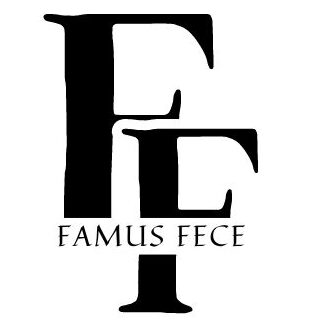Have you heard about the Trulife Distribution mess? It’s a big deal in the health and wellness world right now. This company that sells stuff like vitamins and supplements is in hot water, and people are talking about it.
Trulife is being sued for a bunch of reasons. Some say they stole ideas, others claim they broke promises, and there’s even talk about them tricking customers. It’s like a legal storm hit this company out of nowhere.
This whole situation is causing headaches for everyone involved – from the big bosses at Trulife to the people who buy their products. Let’s dive into what’s going on and why it matters to more than just the folks in suits and ties.
Background of Trulife
Trulife Distribution started back in 2008 as a small company selling health stuff. They began with just a few products, but people liked what they were selling. Over time, they grew bigger and bigger, adding more products and getting more customers.
They became known as a good place to get health and wellness products, and lots of people started trusting them.
Read More About: Market America Lawsuits: Breaking Down The Pyramid Scheme Allegations
The Distribution Agreement
Think of a distribution agreement as a promise between two companies. One company makes stuff, and the other agrees to sell it. This promise says things like how much the stuff will cost, where it can be sold, and how long the deal will last. It’s like a rulebook that both companies agree to follow so everyone knows what to expect.
Key Elements
The important parts of a distribution agreement are like the main ingredients in a recipe. They include who’s involved in the deal, what products are being sold, and where they can be sold.
It also says how long the agreement lasts and what happens if someone wants to end it early. There are usually rules about keeping secrets and what to do if there’s a fight. These parts help make sure everyone understands the deal and plays fair.
Terms and Conditions

The terms and conditions are like the rules of the game. They spell out how long the deal will last, how much things will cost, and when people need to pay. It’s like when you agree to mow your neighbor’s lawn.
You decide how often you’ll do it, how much they’ll pay you, and when they’ll pay. These rules also say who’s in charge of what, like who will advertise the products or handle shipping.
Miscellaneous Provisions
Miscellaneous provisions are like the “just in case” rules. They cover extra stuff that might come up, like what happens if someone wants to sell their part of the business.
These rules also say which laws apply if there’s a problem and where any arguments would be settled. It’s like having a plan B (and C and D) to make sure everything stays fair and clear, even if something unexpected happens.
Reasons Behind Lawsuit
The reasons for the lawsuit are like a list of complaints against Trulife. Some people say Trulife broke promises they made in contracts. Others think Trulife used ideas or designs that belonged to someone else without asking.
There are also claims that Trulife wasn’t honest with customers or broke rules meant to protect shoppers. It’s like Trulife is in the principal’s office, and different people are telling on them for different reasons.
More to Know: Theboringmagazine.Com, Exploring It’s Contents
Alleged Intellectual Property Infringement
Alleged intellectual property infringement is a fancy way of saying Trulife is accused of copying someone else’s ideas without permission. It’s like if you drew a cool picture and then saw someone else selling t-shirts with your drawing on them without asking you first.
People are saying Trulife did something similar with things like product designs or brand names that didn’t belong to them.
Breach of Contract
Breach of contract is like breaking a pinky promise but for grown-ups. It happens when someone doesn’t do what they said they would in an agreement. Maybe Trulife promised to deliver products by a certain date but didn’t, or they agreed to use specific ingredients but changed them without telling anyone.
It’s like if your friend promised to help you move but never showed up – you’d be upset because they broke their promise.
Deceptive Business Practices

Deceptive business practices are tricks companies use to fool customers. It’s like when a magician uses sleight of hand, but not for fun – for making money. Trulife might have said their products could do amazing things that wasn’t true.
They might have hidden important information from customers. It’s like if someone sold you a “magic” weight loss pill but didn’t tell you it was just sugar – that’s not fair to buyers.
Violation of Consumer Protection Laws
Consumer protection laws are rules made to keep shoppers safe and treat them fairly. When a company breaks these rules, it’s called a violation. It’s like the government made a list of “don’t do this” for businesses, and Trulife might have ignored some items on that list.
Maybe they didn’t put proper warning labels on products or they charged people’s credit cards without permission. These laws are there to make sure companies play nice with their customers.
Read This Article: MyGroundBiz: Empowering FedEx Ground Businesses
Competitive Disputes
Competitive disputes are like playground arguments but for businesses. It’s when companies fight over who gets to be king of the hill in their industry. Maybe Trulife is accused of playing dirty by spreading rumors about other companies.
It could also be about Trulife teaming up with other companies to control prices, which isn’t allowed. It’s like when kids make unfair rules in a game to make sure they always win – that’s not okay in business either.
Legal Proceedings
When companies go to court, it’s called legal proceedings. In Trulife’s case, both sides will present their arguments to a judge. They’ll show evidence and maybe have witnesses speak.
This can take a long time – sometimes months or even years. The judge will listen to everything and then decide who’s right and what should happen next.
Impact on Stakeholders

A lot of people are affected when a company gets sued. For Trulife, investors might lose money if the company’s value goes down. Workers might worry about keeping their jobs.
Customers might not trust the company anymore. Other businesses that work with Trulife might think twice about continuing to do so. Even the government might start looking more closely at what Trulife does.
Potential Resolutions
There are a few ways the Trulife lawsuit could end. They could try to work it out by talking and coming to an agreement – that’s called negotiation. Or they could get help from someone neutral to find a solution – that’s mediation.
If those don’t work, they might go to court and let a judge decide. Whatever happens, the goal is to find a fair way to solve the problem.
Lessons for Businesses
The Trulife case teaches other businesses some important things. It shows how crucial it is to follow the law and treat customers fairly. It also highlights why clear communication is so important in business deals.
Companies need to be prepared for possible legal problems and know how to handle them. Being honest and transparent can help avoid a lot of trouble.
The Future of Trulife
What happens next for Trulife depends on how they handle this lawsuit. They’ll need to rebuild trust with customers and partners. They might need to change how they do business to avoid future problems.
Trulife could look for new opportunities, like selling different products or expanding to new markets. If they learn from this experience and make smart choices, they could come out stronger in the end.
FAQs
What is the Trulife Distribution Lawsuit about?
Alleged intellectual property infringement and deceptive practices. It questions Trulife’s business conduct.
How has the lawsuit impacted Trulife and its distributors?
Damaged reputation and disrupted operations. Caused uncertainty for distributors.
What are some potential resolutions to the Trulife Distribution Lawsuit?
Negotiation, mediation, arbitration, or litigation. May result in settlements or court-ordered changes.
What lessons can businesses learn from the Trulife Distribution Lawsuit?
Prioritize legal compliance and ethical practices. Maintain clear communication in business agreements.
What does the future hold for Trulife post-lawsuit?
Depends on handling legal challenges and rebuilding trust. May require innovation and relationship strengthening.
Final Thoughts
The Trulife Distribution lawsuit serves as a cautionary tale for businesses in the health and wellness industry. It highlights the importance of ethical practices, legal compliance, and transparent communication with stakeholders.
The case touches on various issues, from intellectual property rights to consumer protection, demonstrating the complex legal landscape companies must navigate.
As the lawsuit unfolds, its impact reaches beyond Trulife, affecting distributors, customers, and the broader industry. The resolution of this case, whether through negotiation or legal proceedings, will likely shape future business practices in the sector.
For Trulife, the path forward involves rebuilding trust, potentially restructuring operations, and learning from this experience to create a more resilient and responsible business model.

Experienced website administrator Specializing in general topics. Skilled in managing content, Optimizing User Experience, and ensuring site functionality. Dedicated to Delivering Quality and Engaging online experiences for Visitors.












